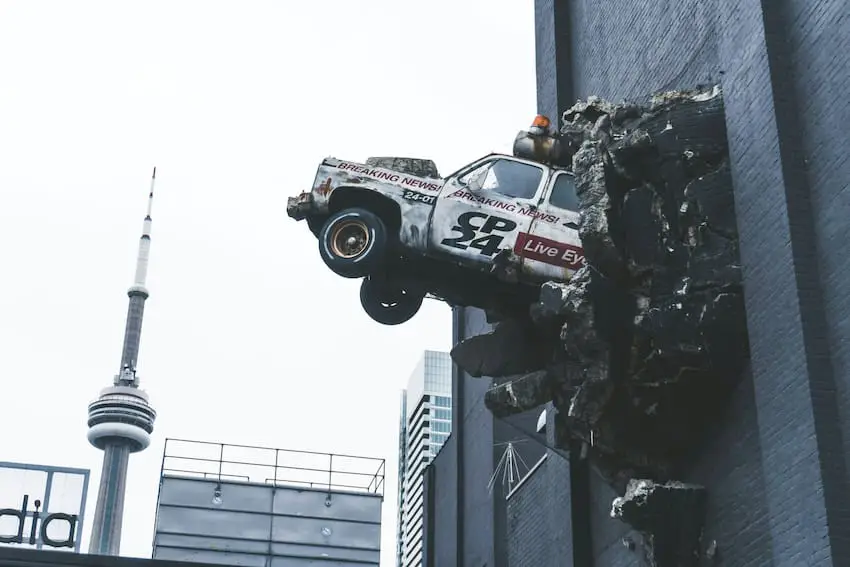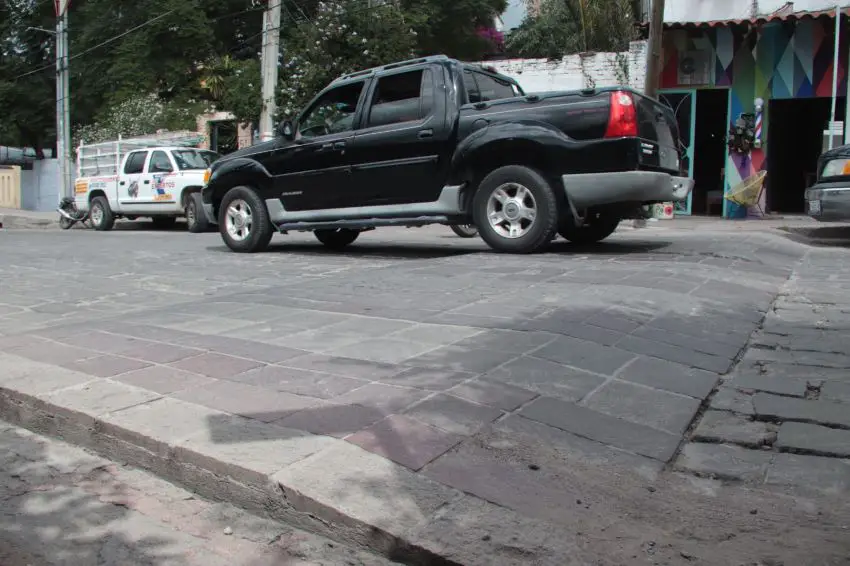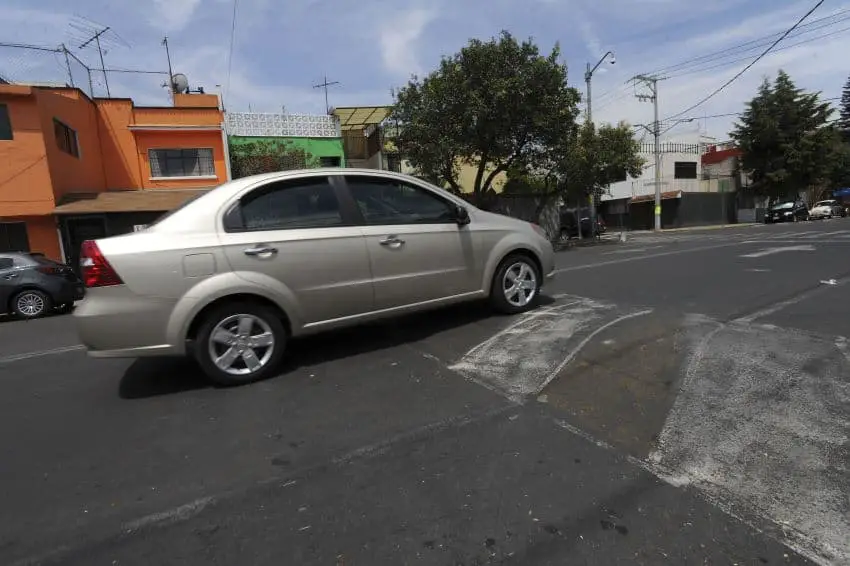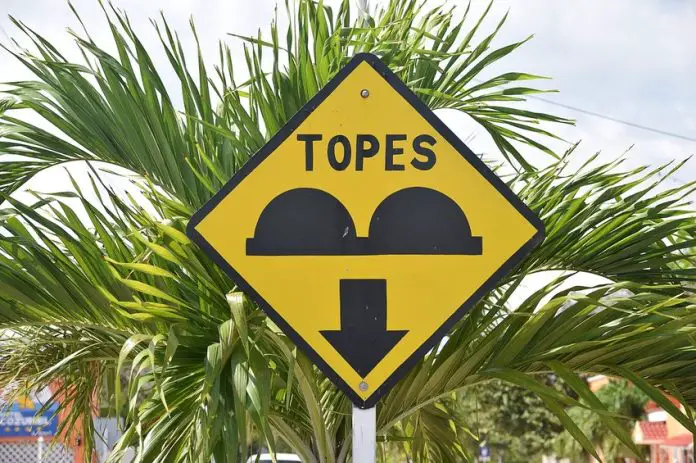A couple of weeks ago, I decided to drive to Veracruz city, about an hour and a half away from where I live. I left later than I’d meant to, and wound up making most of the trip in the dark.
The toll road between Xalapa and Veracruz is in pretty good shape and is always a fairly smooth drive. I’ve come to enjoy driving fast with the music blaring, especially after being stuck in the congested city, where so much of it can barely be covered in second gear.

It wasn’t until I got into the city that my heart jumped up into my throat. I was cruising along happily on one of the city’s widest avenues, heading toward downtown. Almost there!
Suddenly, I hit a bump. A big bump. My car — Scarlet is her name — went flying for a beat more than I’d have liked and landed heavily on the other side of a very big, very invisible tope. Luckily, Scarlet and I both lived to tell the tale.
What’s that thing in the road?
Topes, topes, topes.
If you’ve driven in Mexico, you’re certainly familiar with what they are. For those uninitiated among you, they are essentially speed bumps. And they are everywhere.
Everywhere.

The reason topes — pronounced “toe-pay” — are everywhere is, simply, to slow drivers down. The transit police do not have the manpower or training to stop speeders in any meaningful or consistent way. When they do stop someone, it’s usually for a minor infraction like an expired sticker or tinted windows so they can solicit a mordida. That word translates literally as “bite,” but means a bribe. Did I mention their pay is not great? As Damien Cave of the New York Times put it, topes are “suspension-killing wonders that fill a void in law and order.”
We let the road itself do the work of stopping speeders around here. And the way it does the work is by literally forcing drivers to slow down, lest they really, really mess up their cars.
Unfortunately, there’s no standard regulation regarding topes, which vary by state and even municipality, and many don’t follow the standards that do exist. They come in all shapes and sizes and can be found — I cannot emphasize this enough — literally anywhere. That includes the highway, so keep your eyes peeled! Topes can even appear on steep uphill roads, so make sure your zero to first gear game is on point if you’re in a standard.
Remember too that while most of them were likely painted initially, once the paint wears off, they may never be painted again. Look alive!
Topes come in a variety of presentations: let me count the ways!

The invisible mountain
This was the kind of tope I encountered on the avenue into Veracruz. The main way you can tell it’s there is by noticing the cars in front of you braking at the same spot even though there’s no traffic light. Depending on the time of day, you might also notice its shadow. I must have been spaced out that night, because I saw no clue of its presence until me and Scarlet were flying like Daenerys on her dragon.
Snakes in the gray grass
These are similar to the ones above, but the impact isn’t quite as harsh because they’re smaller. There’s one like this near my house, in fact, that I regularly glide over at 30 kmh without too much of an issue.
Balls of doom
These topes — also known as boyas, or buoys — are made up of a series of metal half-balls that stretch across the road, and they are hands-down awful. If you’re lucky, they’ll be worn down a little by the time you get to them. Or, one or two will be missing, allowing you to spare at least two of your tires with some clever maneuvering. I regularly have to go over some brand new ones, though, and even in first gear and diagonally — a trick for lowering the impact — it feels like I’m driving over bowling balls.
Ridged plateaus
These seem to be gaining in popularity when it comes to new topes. They slope up on each side, and are wide and flat on top. We just got some new ones around the corner from my house. They looked innocent and undramatic enough. But let’s just say that if Scarlet’s belly was itchy, she got a good scratch.
@aztecanoticias Cuatro veículos dañados en tan solo 20 minutos por este mega tope colocado en Puebla. A pesar de que los autos viajaban a la velolocidad sugerida, los daños eran inevitables. Tras el trabajo periodístico realizado por Azteca Noticias, ¡ocurrió el milagro! y ya fue balizado el tope para qu elos conductores puedan ver este enorme tope. Pero, y los daños ocacionados, ¿quién se hará responsable? #FuerzaInformativaAzteca #Tope #daños #automovilistas #irresponsabilidad #vialidad #AztecaNoticias ♬ sonido original – Azteca Noticias
Obstacle course
These can be any kind of topes that have been mercifully worn down or otherwise destroyed, at least in part. The most fun ones let you get both sets of your tires through without elevating your car. On one of my common routes home, there’s one I’ve learned to maneuver so well I don’t even have to slow down!
A variation of this is when there’s a tope that only stretches across half of the road. If you see someone swerving drastically in front of you, they’re likely going around one of these half-hearted attempts at slowing traffic.
Not today, tope!
So be careful out there, folks. Expect that the road will send you flying, and stay alert! And try to have fun with the obstacle course ones.
Sarah DeVries is a writer and translator based in Xalapa, Veracruz. She can be reached through her website, sarahedevries.substack.com.
